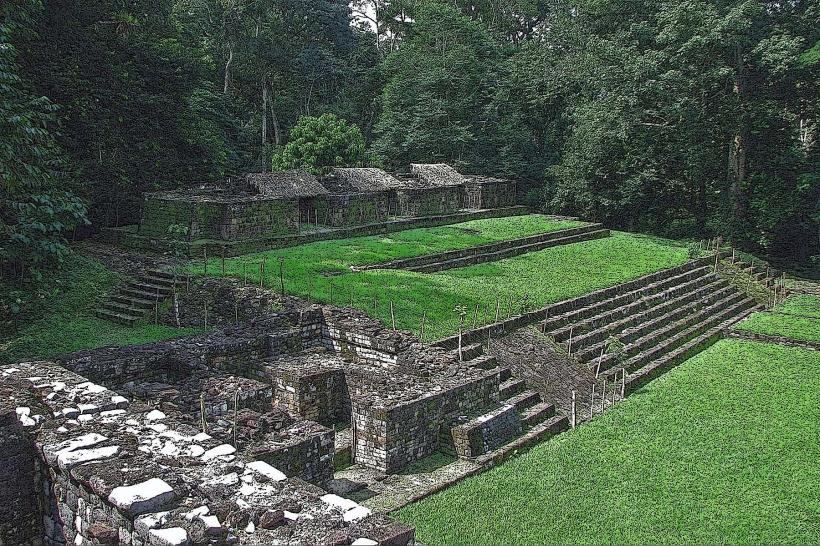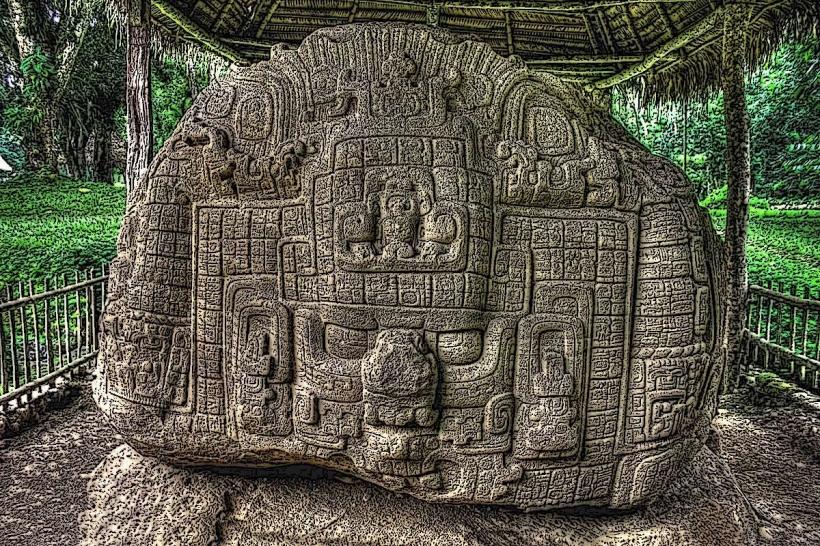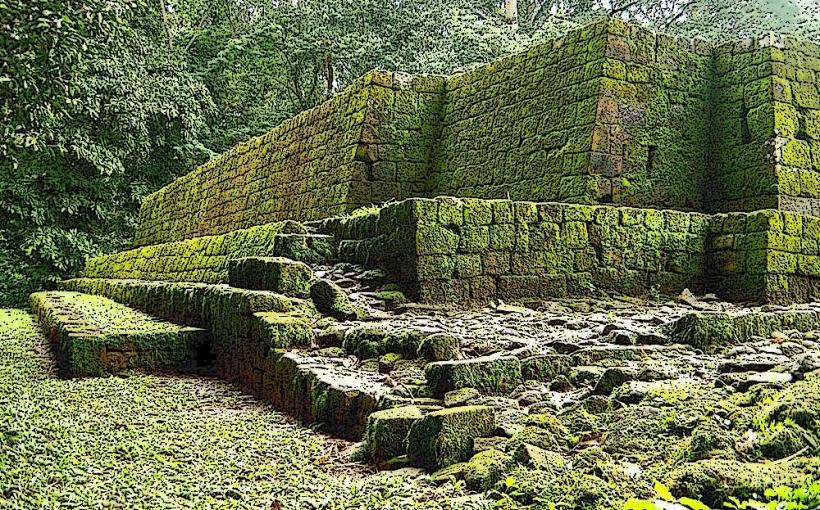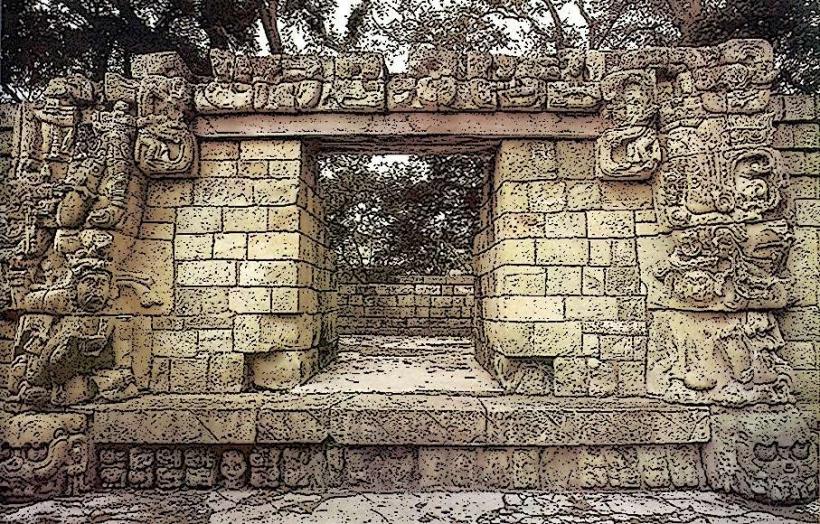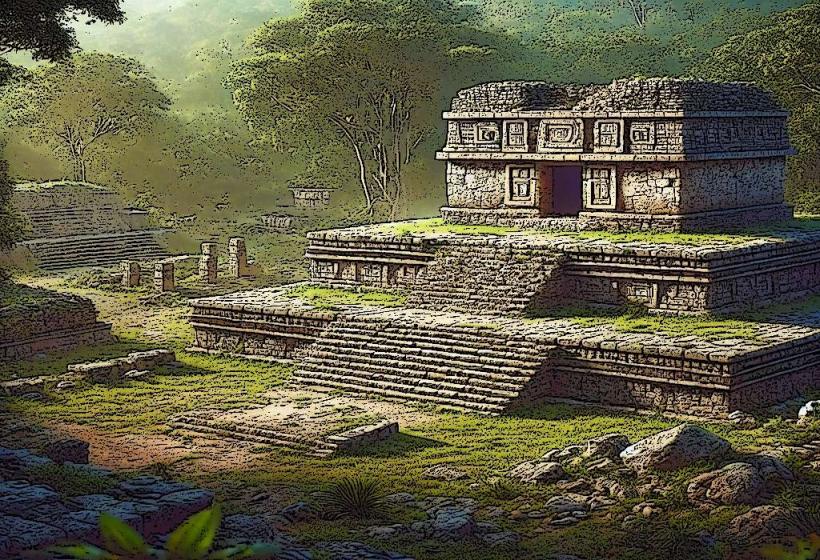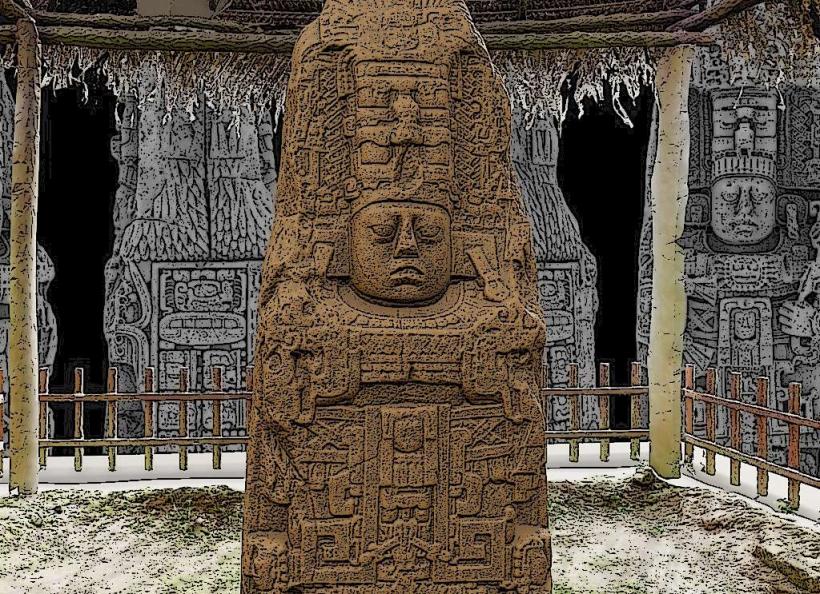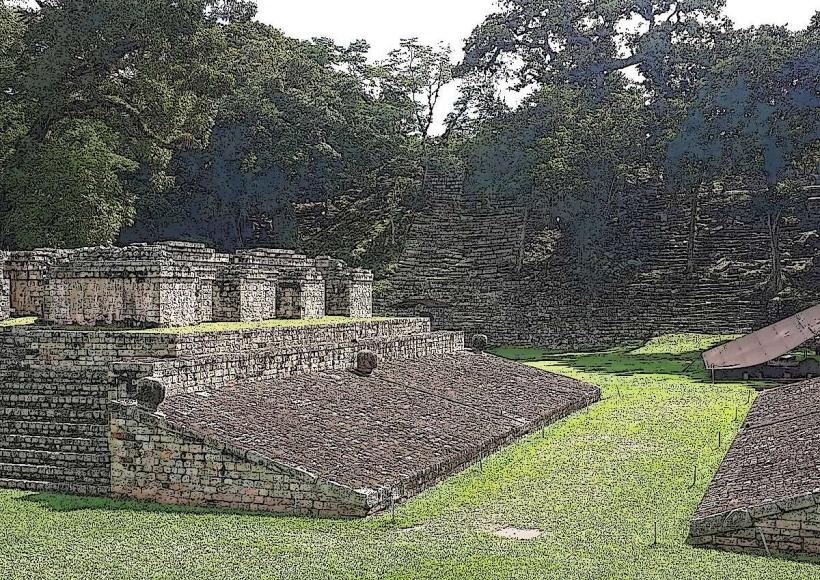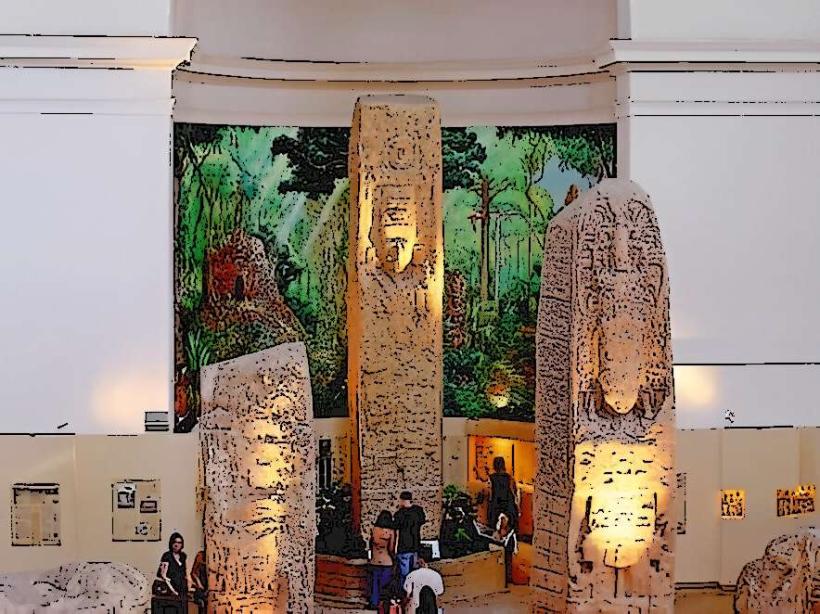Information
Landmark: Plaza PrincipalCity: Quirigua
Country: Guatemala
Continent: North America
The Plaza Principal (Main Plaza) at Quiriguá is a central open space that forms an important part of the ancient Maya city’s layout. Like many other Maya cities, Quiriguá’s plaza was a place for public gatherings, ceremonies, and rituals. The Plaza Principal is where several of the most important monuments and structures of the site are located, including monumental stelae, altars, and zoomorphs. This area is one of the focal points of the archaeological park, offering visitors a chance to understand the political, social, and ceremonial life of the Maya civilization.
Layout and Features of the Plaza Principal
The Plaza Principal at Quiriguá is a large, open area, surrounded by monumental architecture, and it serves as a ceremonial and civic center. The plaza is aligned with the Acropolis, which is the elevated area where the rulers and priests would conduct their important rituals and ceremonies. The monumental stelae and altars placed in the Plaza Principal would have been focal points for public displays of power and spiritual significance.
Key features of the Plaza Principal include:
Monumental Stelae: The Plaza is home to a collection of impressive stelae (stone monuments), which are among the most iconic features of Quiriguá. These stelae are carved with intricate Maya glyphs and reliefs depicting rulers, gods, and important historical events. The stelae were likely erected to commemorate significant moments in the city’s history and the achievements of its rulers. The stelae in the Plaza Principal include some of the tallest and most elaborate in the Maya world.
- Stela E: One of the most famous stelae in the Plaza, Stela E stands at 10.6 meters (35 feet), making it the tallest carved stela in the Maya region. It is thought to commemorate a key event in the history of the city, such as the ascension of a ruler or a military victory.
Altars: In front of the stelae, there are altars, which were likely used in ritualistic ceremonies. These are carved stone platforms, often adorned with reliefs of animals or deities. The altars were places where offerings could have been made to the gods during religious ceremonies, highlighting the spiritual role of the plaza.
Zoomorphs: The Plaza Principal also features zoomorphs—large stone carvings of animals such as jaguars, serpents, and crocodiles. These zoomorphs represent powerful symbols in Maya cosmology and religion. Some of these sculptures are hybrid forms, combining human and animal features, which may have represented deities or spirits in Maya belief systems.
Role in Maya Society
The Plaza Principal at Quiriguá would have been a central space for public life. It was likely the venue for important ceremonial events, including the ascension of new rulers, military victories, and religious festivals. Large crowds would have gathered in the plaza to witness these events, with the stelae and altars serving as the backdrop for the ceremonies.
The placement of the stelae and altars in the plaza suggests that the space had strong political and religious significance. The rulers of Quiriguá would have used the plaza to display their power and legitimacy, reinforcing their connection to the gods and their role as intermediaries between the divine and human worlds.
In addition to the ceremonial functions, the Plaza Principal likely served as a space for public gatherings. The open area would have been used for social and political activities, where the elite and common people could come together to witness major events and announcements.
Symbolism and Architecture
The symbolic layout of the Plaza Principal, with its carefully arranged monuments and sculptures, reflects the Maya worldview, where the relationship between humans, nature, and the cosmos was central. The stelae and zoomorphs may have represented cosmic forces and gods associated with the natural world, reinforcing the idea that political power was intertwined with the supernatural.
The alignment of the plaza’s structures also suggests that the Maya had a sophisticated understanding of astronomy, as many of the monuments in the plaza are believed to have been positioned with the movements of the sun, moon, and planets in mind. This cosmic alignment would have added an additional layer of meaning to the events held in the plaza, linking them to the greater cycles of the universe.
Decline and Rediscovery
Like much of Quiriguá, the Plaza Principal saw a decline around the end of the 9th century, when the city was abandoned. The reasons for Quiriguá's decline remain unclear but may have been related to environmental changes, resource depletion, or political conflict.
The Plaza Principal, like other parts of the site, was eventually forgotten and overgrown by nature until it was rediscovered in the 19th century. Today, it remains a key area of the archaeological park, providing an important glimpse into the ceremonial life of the ancient Maya.
Conclusion
The Plaza Principal at Quiriguá was a central hub for both ceremonial and public life in the ancient city. Its monumental stelae, altars, and zoomorphs highlight the political, religious, and cosmological significance of the space, where the rulers of Quiriguá would have enacted their power and connected with the divine. The Plaza is a remarkable example of how architecture and art were used to reinforce the Maya worldview and legitimize the authority of their rulers, making it one of the most important and fascinating features of the site.

